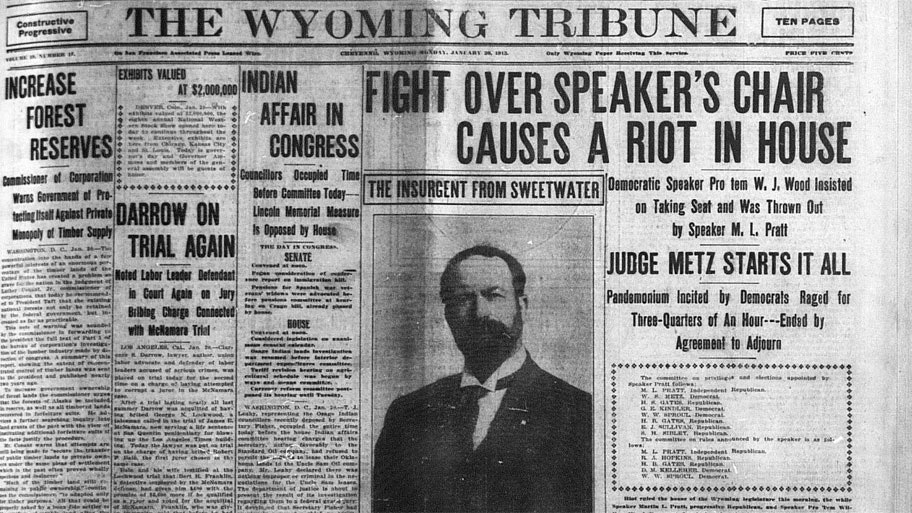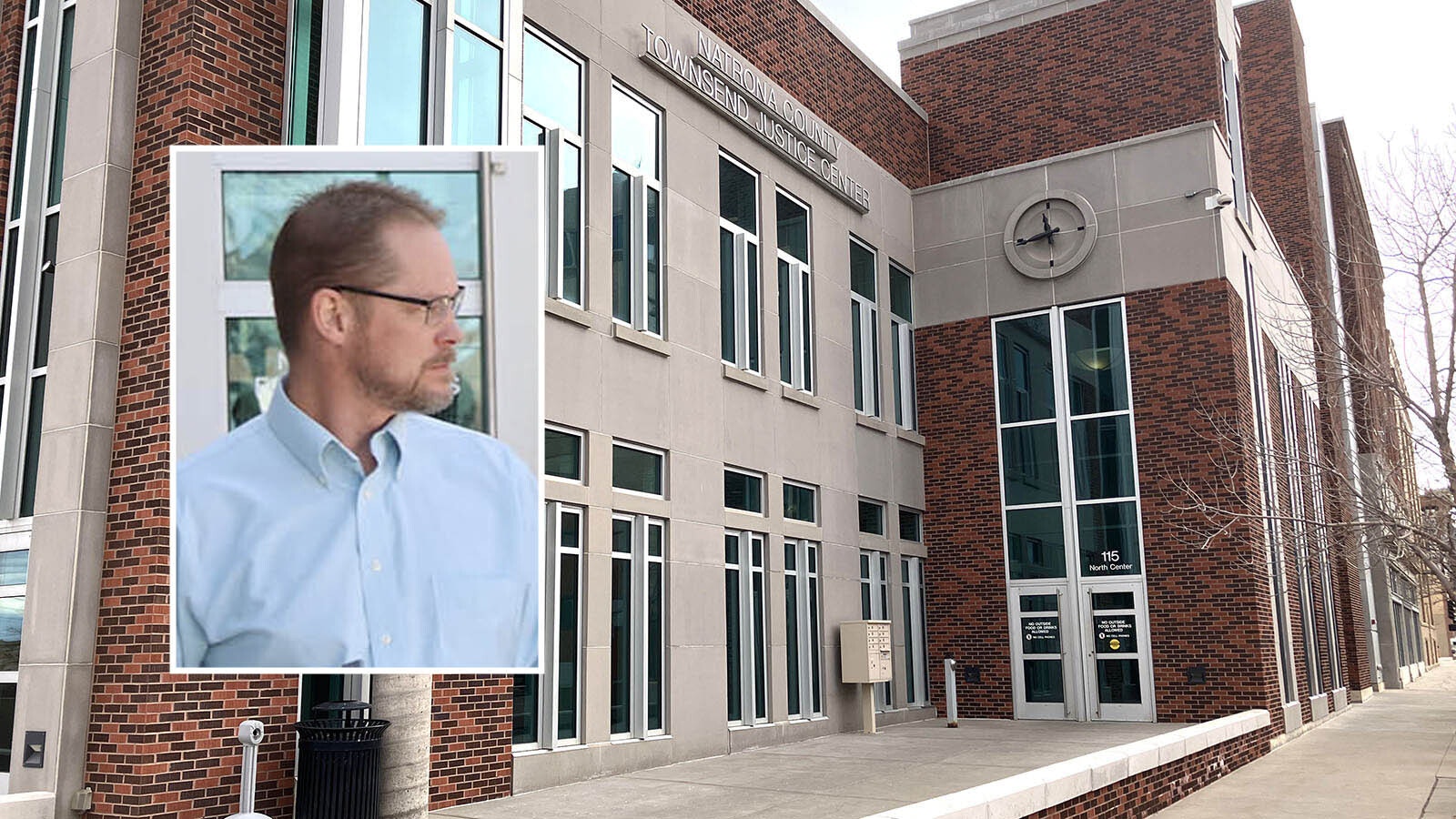This past week, the Tennessee Legislature permanently expelled two of its House members for using a bullhorn to interrupt debate and lead a pro gun control protest in that chamber.
For those surprised by these recent activities, consider that 110 years ago, a full-on brawl broke out in the Wyoming Legislature.
The Jan. 21, 1913 story by the Cheyenne State Leader says it all.
“Kill him!” “Hit him!” “Soak him!” the paper wrote, leading the story with these quotes from legislators screaming the day before.
One of the most infamous moments of the 1913 brawl can still be seen in a photo hanging outside the Wyoming House chambers.
In the composite of all the Democratic Party legislators of 1913, the viewer’s eye is drawn to a tear in the paper that cuts prominently across its center.
Legend has it from multiple historians, the crack came when the photo was smashed atop another legislator’s head during the fighting, although there are no newspaper reports substantiating this.
Back To 1913
The roots of the brawl were in development long before the Jan. 20, 1913 incident. Suzi Taylor, Reference Archivist at the Wyoming State Archives, said the divisiveness of the 12th Legislature is evidenced by the fact there were separate photos for the Democrats and Republicans.
“This is the only year this happens,” Taylor said.
What led to the brawl stemmed from a debate over the partisan balance of an elections committee that would determine the outcome of three contested House races. The outcome of these races would determine control of the House, where there was an almost even split between the two parties. At the time, the Legislature elected the state’s U.S. senator.
The Democrats contested the results of the three races in Lincoln County, where they believed three Republican state representatives won because the Diamond Coke and Coal Company pushed many foreign workers to vote illegally, the Wyoming Historical Society reports.
Republican F.E. Warren, who had served as Wyoming’s U.S. senator since 1895, and Democrat John B. Kendrick from Sheridan were the two leading candidates.
According to the various accounts, the Legislature was largely split between pro-Warren and anti-Warren lines. Many of the anti-Warren crowd described Warren and his supporters as the “Warren machine,” a powerful and corrupt, force in Wyoming politics, Taylor said.
Around this time, progressives, Republicans, and Democrats each fought for majority power across the country. In 1912, former President Teddy Roosevelt formed his own progressive party, also known as the Bull Moose Party.
A similar split divided Wyoming in 1913. The governor was Joseph Carey, a Democrat and longtime rival of Warren’s, Taylor said.
In a Jan. 24, 1913 State Leader story, it was announced that Roosevelt had backed Republican legislator E.H. Manson, who refused to support Warren for Senate. Roosevelt described Manson as a defender of “honest government.”
Martin Pratt, a would-be progressive from Powell who ran as a Republican, decided he would run for Speaker of the House. He eventually joined the Democrats, giving them a three-vote majority in the House, and Pratt the speakership, according to the Wyoming Historical Society.
But, Pratt wasn’t loyal to either side, seeing it as his duty as Speaker to not play favorites. The State Leader remarked that Pratt had joined the “Warren gang.”

The Brawl
At one point in the moments leading up to the brawl, Pratt stepped away from the speaker’s chair to make a point of debate from the floor. Democrat Speaker Pro Tempore Rep. William Wood of Crook County then seized his chair and called for a vote on the important committee selections.
What came next according to the Jan. 20, 1913 Wyoming Tribune story, was a “frenzied hand-to-hand struggle for the possession of the speaker’s chair.”
When Wood refused to leave the chair, Pratt shoved him, sending the Democrat to the floor with the chair toppling over him.
The Democrats then pushed Wood back into the speaker’s chair, followed by a cacophony of yelling, shoving and blows between the legislators.
“In the excitement blows were struck, but by whom, it could not be seen,” the Tribune reported. Later on, Wood and Pratt were seen exchanging punches.
After a long while, order was restored in the chamber and in the following days, many compromises were made on the issues leading to the fight.
The Leader described the event as a sad example of “political chicanery.”
In a Tribune story at the end of the session, Pratt expressed little remorse about what happened.
“I regret that the Democrats so far forgot propriety and parliamentary usage as to try to take forcible possession of the speaker’s chair,” he said, “but as they did so, I was obliged to use physical force to retain my position. After that one incident there was no question as to my right and authority—possibly my ability—to retain possession of the speaker’s chair and wield the gavel.”
The moral of the story is, as bad as partisanship and decorum may seem to get these days in politics, until there are fisticuffs, it can always get worse.





